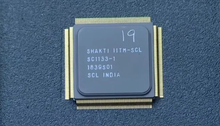IIT Madras launched ‘MOUSHIK’ microprocessor SoC for IoT products
It was conceptualized, designed, and developed at the Pratap Subrahmanyam Centre for Digital Intelligence and Secure Hardware Architecture (PS-CDISHA) of the RISE Group, Department of Computer Science and Engineering, IIT Madras. "There are three steps involved in the making of a microprocessor, namely design, fabrication, and post-silicon boot-up," Kamakoti Veezhinathan, Reconfigurable Intelligent Systems Engineering (RISE) Group, IIT Madras, said in a statement.
Ideology
Researchers from the Indian Institute of Technology (IIT) Madras have come up with 'MOUSHIK' - an indigenously-made Microprocessor that can cater to the rapidly-growing IoT devices that are an important part of Smart Cities of a Digital India. The impact of the completely-indigenous development process is the showcasing of an Indian ecosystem for designing, developing, and fabricating end-to-end systems within the country, leading to self-sufficiency.
Applications
- ID cards
- Debit cards, credit cards
- Travel cards for metros
- Driving licenses
- Electronic voting machines (EVMs)
- Office management systems including attendance, surveillance cameras, and safe locks.
- Personalized health management systems
- Consumer electronics washing machines and water pump monitoring systems
Previous developments

SHAKTI Microprocessor can be used by others as it is on par with International Standards. This series of microprocessors has the potential to pave way for a global market. As it is open-source, any industry including startups can take the design. This development will assume huge significance when systems based on SHAKTI processors are adopted by strategic sectors.
This is a basic building block for mobile computing devices, embedded low power wireless systems, and networking systems besides reducing reliance on imported microprocessors in the Communications and Defence Sectors. The other crucial aspect of such an indigenous design, development, and fabricating approach is reducing the risk of deploying systems that may be infected with back-doors and hardware Trojans.
Week Rewind 2: Last Week in a Quick Snap
Related post
0 comments
Leave a reply
Please Login or Register to Comment. Get StartedWeek Rewind 2: Last Week in a Quick Snap






